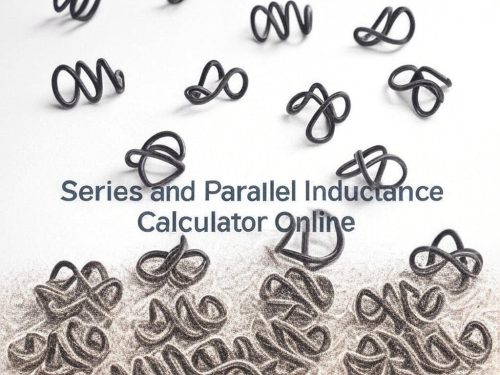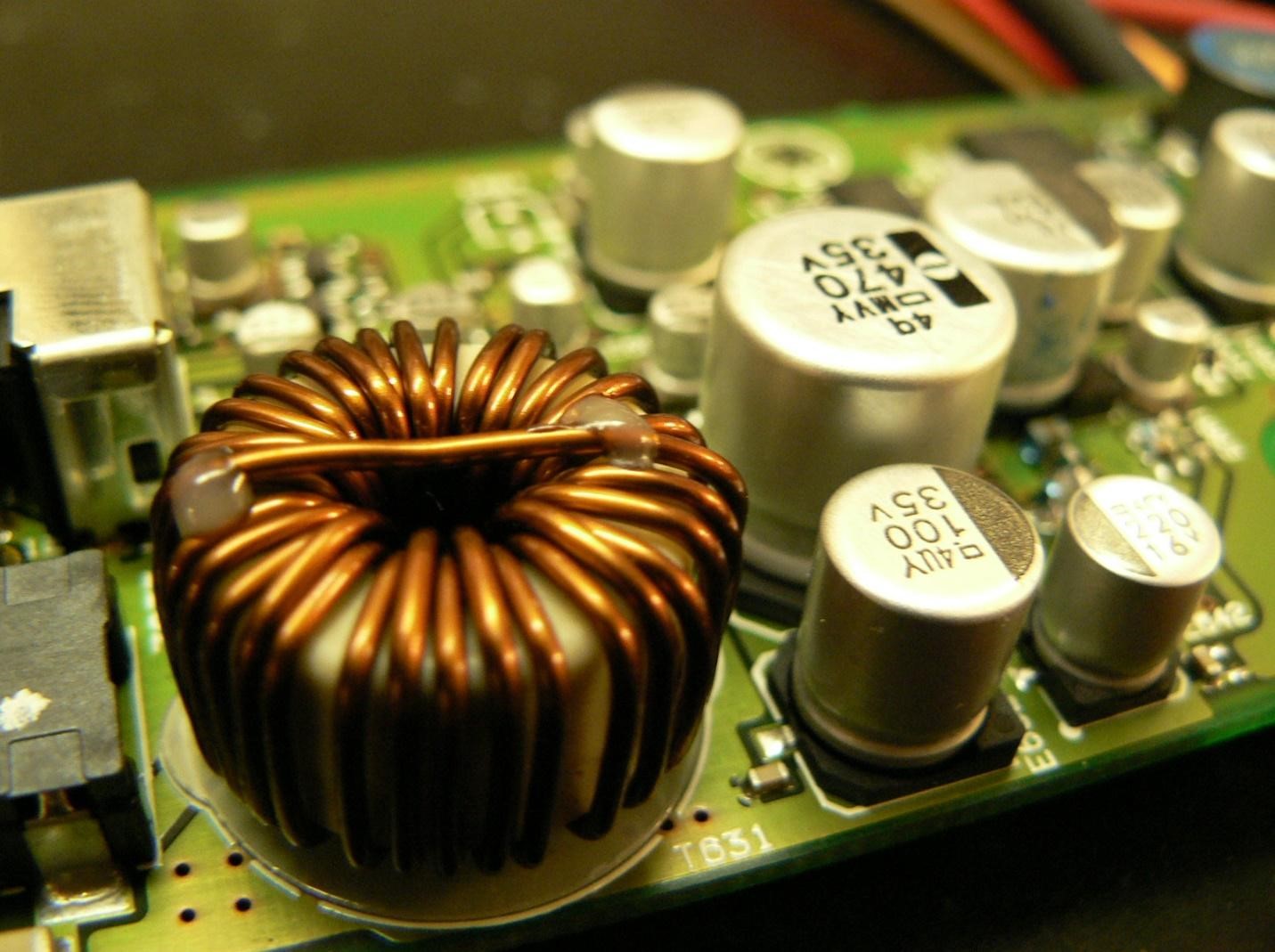
Series and Parallel Inductance Calculator Online
The Series and Parallel Inductance Calculator is a user-friendly tool that allows users to calculate the total inductance of multiple inductors connected in series or parallel. Here’s a brief overview of its features:
-
Number of Inductors: Users can specify how many inductors are involved in the calculation.
-
Units of Inductance: The tool provides options to choose from Henry (H), MilliHenry (mH), and MicroHenry (µH).
-
Combination Type: Users can select whether the inductors are connected in series or parallel, and the tool will calculate the total inductance accordingly.
-
Responsive and Stylish Design: The calculator is styled to match the navy blue theme of the user’s website, ensuring a seamless visual integration with the site.
This tool helps students and engineers quickly compute the total inductance in circuits, making it a useful addition to educational websites focused on electrical engineering.
Series & Parallel Inductance Calculator
What Is an Inductor Vs Capacitor. Capacitors and inductors are critical components in the field of electrical engineering and electronics. They both store energy naturally; therefore, they have applications in power networks. Complex printed circuit boards are used in the designing of advanced electronic systems, where they allow the integration of capacitors and inductors.
Though both the capacitors and inductors store energy, they do so in different ways and show different behaviors in complex printed circuit boards.
With that said, we will look into the comprehensive explanation of inductors and capacitors, their characteristics, and their top applications. So stick with us till the end.
What Are Inductors?
Inductors are also known by the name choke or coil. They are an important electrical component that stores energy in the form of a magnetic field. The inductor is basically a conductive component that is designed to generate a strong magnetic field. It is composed of a wire that is wound into a coil around a core. The core is made of a magnetic material such as iron.
The inductor is known for its major property; inductance. The inductance is measured in enries (H), which indicates how much energy it is capable of storing. The number of turns in the coil, the permeability of the core material, and the geometry of the coil are some factors on which the inductance depends.
The structure of an inductor is of significant importance. The current-carrying wire produces a circular magnetic field. So when multiple loops are placed side by side, it leads to a concentrated magnetic field inside the coiled wire.
The Characteristics
The basic characteristic of an inductor is that the current flows through it to generate a magnetic field. The change of magnetic field then produces an opposing current.
Electromotive force (EMF) is another important characteristic of inductors. Inductors have self-inductance that allows them to produce EMF, which opposes the change in current flow. This is called back EMF, which is typically observed when there is a voltage spike.
Moreover, inductors are also used to filter signals in any prototype circuit board. This means that they would allow only certain frequencies to pass through while blocking the other frequencies.
what are the electrical properties of inductor?
What Are Capacitors?
Capacitors are mirror images of inductors. There are also electronic components that store energy in the electric field. It stores energy to preserve the voltage in the circuit. They are composed of two conductive plates, which are separated by an insulating material that is called a dielectric. The commonly used dielectric materials include mica, porcelain, Teflon, cellulose, and Mylar.
The charges are stored in it when a potential difference is applied to both of its terminals. The ability of a capacitor to store electric charge is called capacitance (C), which is measured in Farad (F). various factors like the dielectric constant, the surface area of the plates, and the distance between them determine the capacitance of a capacitor.
Once a potential difference is applied across the plates of a capacitor, an electric field is established; hence the charges accumulate on the plates. Capacitors are known to allow AC to pass through them while blocking the DC. This prevents the flow of a steady current through the capacitors.
The Characteristics
One of the key characteristics of capacitors is that they store energy in electric form. The energy is released by applying the potential difference, which changes the voltage across the plates.
These electronic components are popularly used in smoothing and filtering. Capacitors absorb voltage spikes and also prove useful in providing temporary power in case of interruptions or voltage sags.
Inductors and Capacitors – The Difference
Below is the difference between inductor and capacitor in tabular form for better understanding.
| Inductor | Capacitor |
| Stores charge in the form of a magnetic field | Stores charge in the form of an electric field |
| Resists change in current | Resists change in voltage |
| Current doesn’t change instantaneously | Voltage doesn’t change instantaneously |
| Current passes through the coil | No flow of current |
| Molded inductors, Ceramic core inductors, coupled inductors, and multi-layer inductors are some of their types. | Types of capacitors include Tantalum, Ceramic, and Electrolytic. |
| Highly efficient with low frequencies | Highly efficient with high frequencies |
| It is used when resonance is present on applying specific frequencies | Large capacitance capacitors are used in power supplies having high voltage. |
| Acts as a short circuit to direct current. | Acts as a short circuit for alternating current |
Applications of Inductors
Inductors have a wide range of applications, particularly in electronics. For instance, proximity sensors utilize the mechanism of inductors that is used in traffic signals. Similarly, a combination of inductors can be used as a transformer.
Inductors are also used in ferrite beads in charging cables and various computer parts. They can also be combined with capacitors to use as filters. Relays, chokes, and tuning circuits are some other applications of inductors.
Application of Capacitors
Capacitors also have extensive use in electronics and electrical systems. They are employed in electronic timing circuits, like timers and oscillators, for they control the timing intervals.
Capacitors are also important components in tuning circuits in radio systems. The capacitor banks are also used in pulsed power applications like particle accelerators, pulsed lasers, Marx generators, etc. Devices like flash cameras also use capacitors for energy storage, where they need to quickly discharge stored energy whenever it’s needed.
Series and Parallel Connection of a Capacitor
Final Words

Both the capacitors and inductors store energy, but they do so in different forms and are mirror images of each other. While capacitors store energy in an electric field, inductors store it in a magnetic field.
Did you know that about one trillion capacitors are produced every year? That number speaks to the importance of the electrical device and how it powers the world. With the help of both capacitors and inductors, engineers are able to precisely control the current in a circuit. It would be impossible to design complex printed circuit boards without using inductors and capacitors.
Engineers are working on assembling a prototype circuit board, which incorporates capacitors and inductors, before its mass production.
Both the inductors and capacitors have unique features, making them equally essential in electronics. It is necessary to understand their properties, characteristics, and behaviors before integrating them onto complex printed circuit boards.
At Hemeixin PCB, we specialize in all things related to rigid flex pcb and complex printed circuit boards. Whether you need help on a personal project or require rf pcb products for commercial purposes, our engineers can be of help. With the ability to meet your complex printed circuit board design needs, Hemeixin PCB can help you complete your project on time and within your allocated budget.